MultiLipi 2.0: Powerful New Features for Multilingual SEO, AI Optimization & Visual Translation
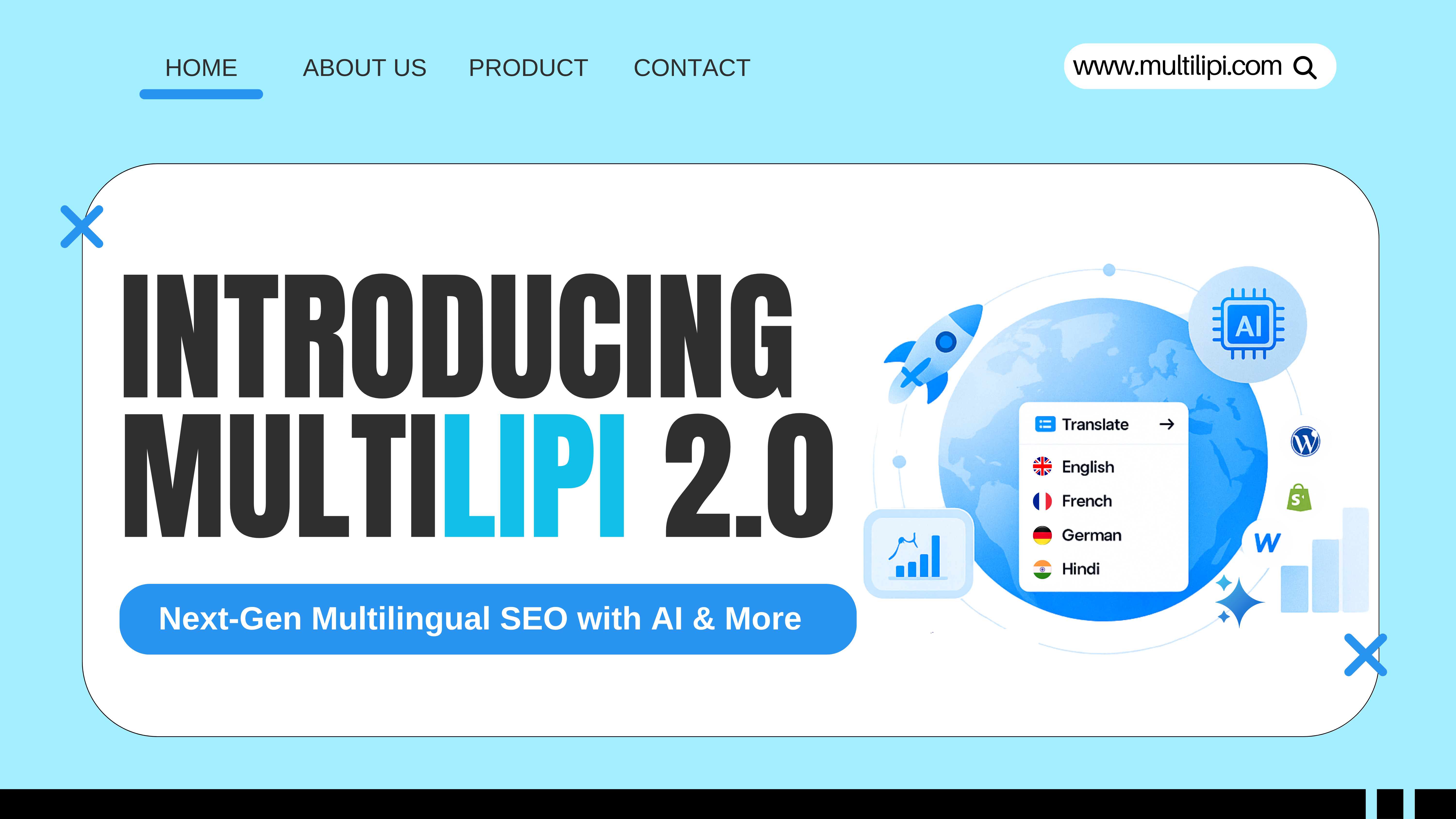
We're thrilled to unveil MultiLipi 2.0, our biggest update yet — built to help you translate smarter, optimize faster, and grow globally without limits. With deep AI integrations, powerful SEO enhancements, and greater visual and language customization, this release transforms how websites scale across languages. Whether you're a global business, content team, or SEO strategist, these new features are designed to boost your traffic, engagement, and multilingual performance like never before.
🌐 Sub-directory Website Support for WordPress
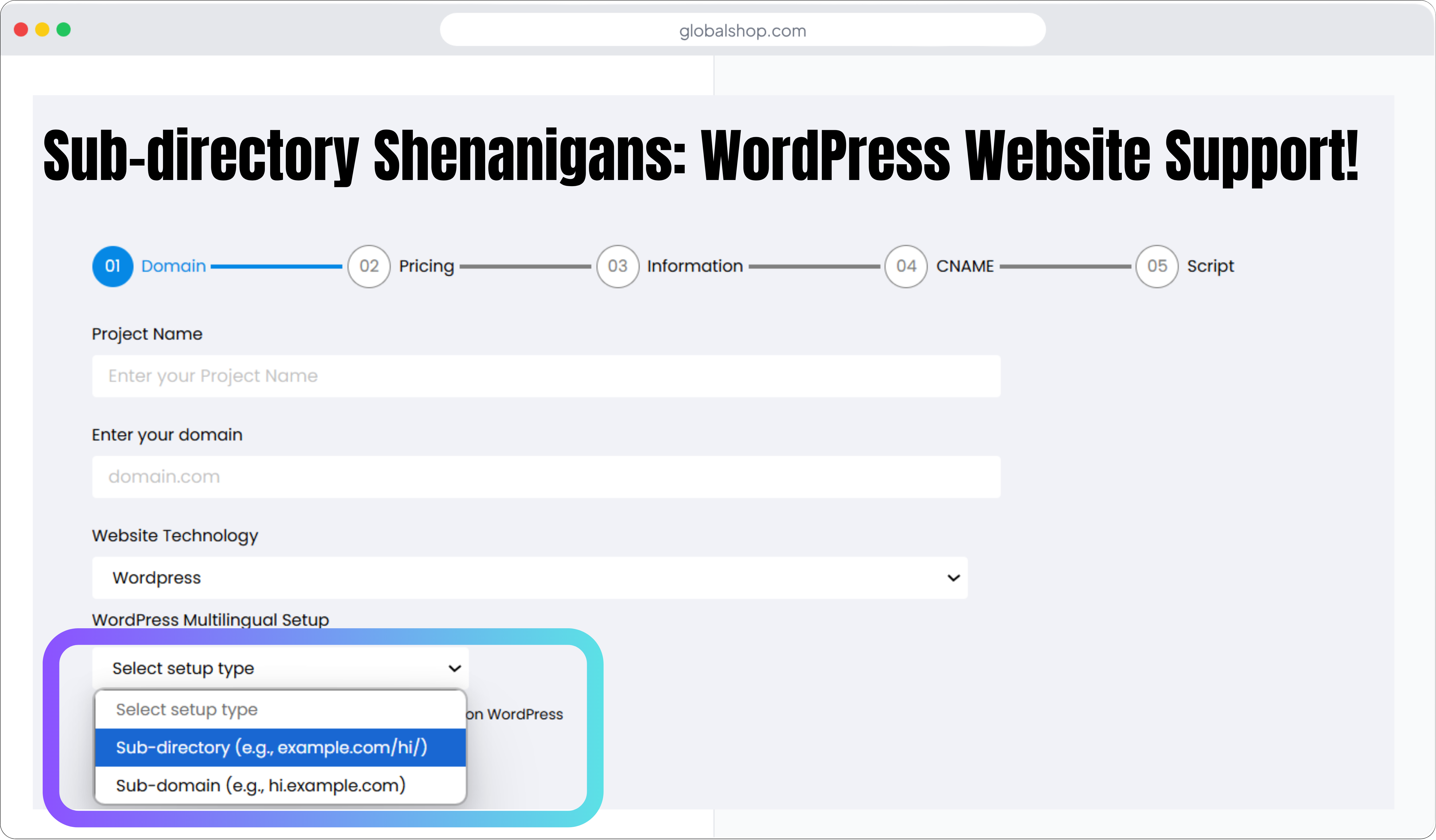
Overview
MultiLipi 2.0 now supports sub-directory based multilingual SEO setup directly for WordPress websites. Instead of using subdomains (e.g., hi.example.com), you can now translate your site using sub-directories (e.g., example.com/hi/) — a major SEO win for retaining domain authority and simplifying analytics.
Use Case
Ideal for businesses and bloggers using WordPress who want:
- Better SEO ranking using sub-directory structure.
- Easier site maintenance without managing multiple subdomains.
- Improved compatibility with Google Search Console and existing sitemap strategies.
Detailed Insights
- Sub-directory structure retains root domain authority, helping all language pages rank faster.
- Removes the need for DNS changes and complex subdomain management.
- Better compatibility with tools like Yoast SEO, RankMath, and Google Page Indexing API.
🧠 AI SEO Vulnerability Detector with Smart Suggestions
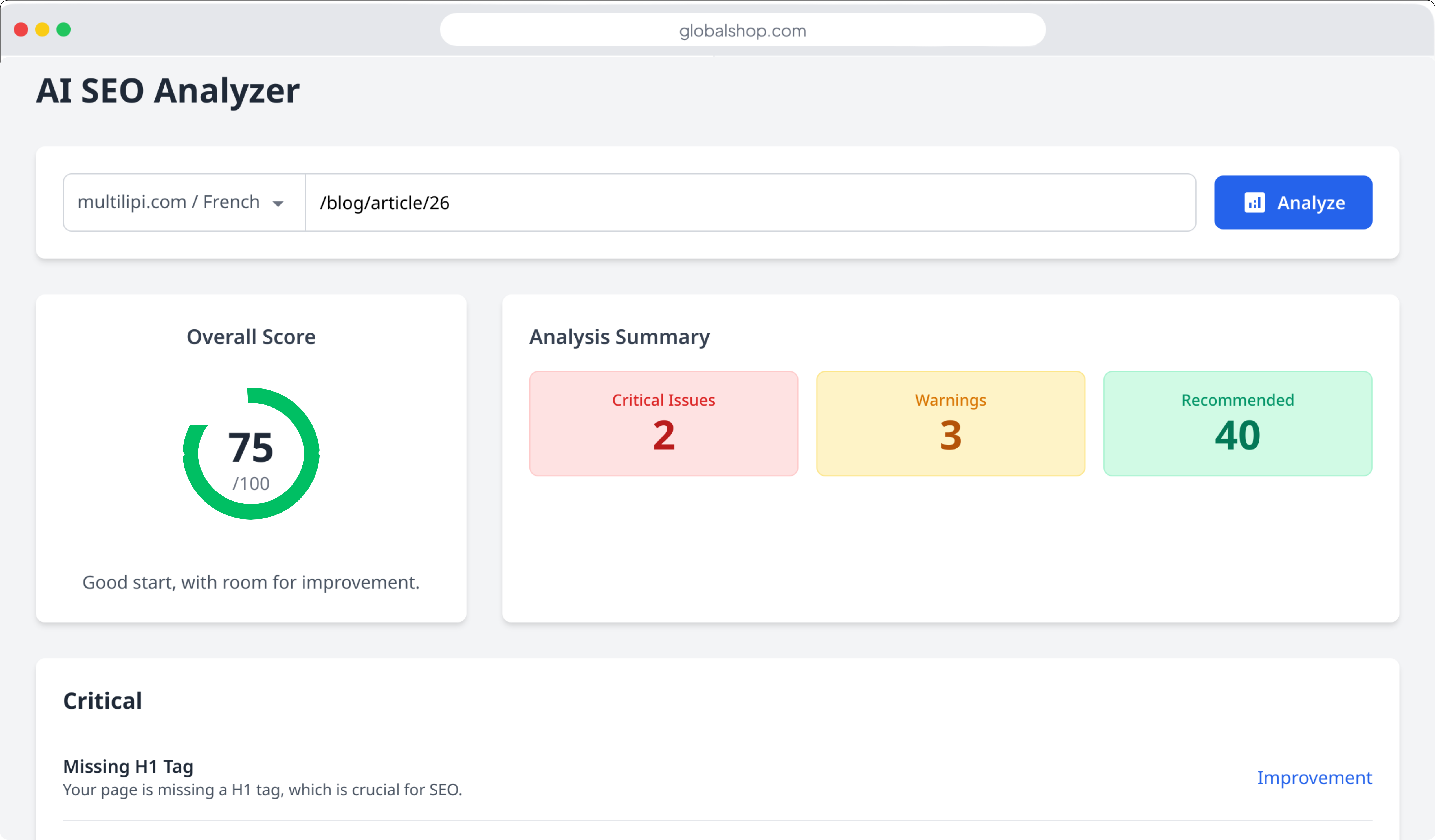
Overview
MultiLipi 2.0 introduces the AI-powered SEO Vulnerability Detector — your intelligent assistant to audit, detect, and fix multilingual SEO issues in seconds. The tool performs a deep crawl of any translated page and returns:
-
An SEO Health Score out of 100
-
Lists of Critical Errors, Warnings, and Recommendations
- New: AI-Generated Fix Suggestions to help you instantly resolve SEO problems
This means no more guessing what’s wrong or how to fix it — the AI guides you step-by-step.
Use Case
This feature is a must-have for:
- Content teams managing translations across 100s of pages and languages
- SEO specialists focused on fixing technical issues that hurt Google indexing
- Agencies offering multilingual SEO audits to their clients
- Founders & marketers who don’t know SEO but want results
Why It Matters
These AI-powered suggestions help you:
- Fix issues without needing an SEO expert
- Shorten your time-to-rank in new markets
- Build Google-trusted multilingual pages with confidence
✨ AI Content Suggestions
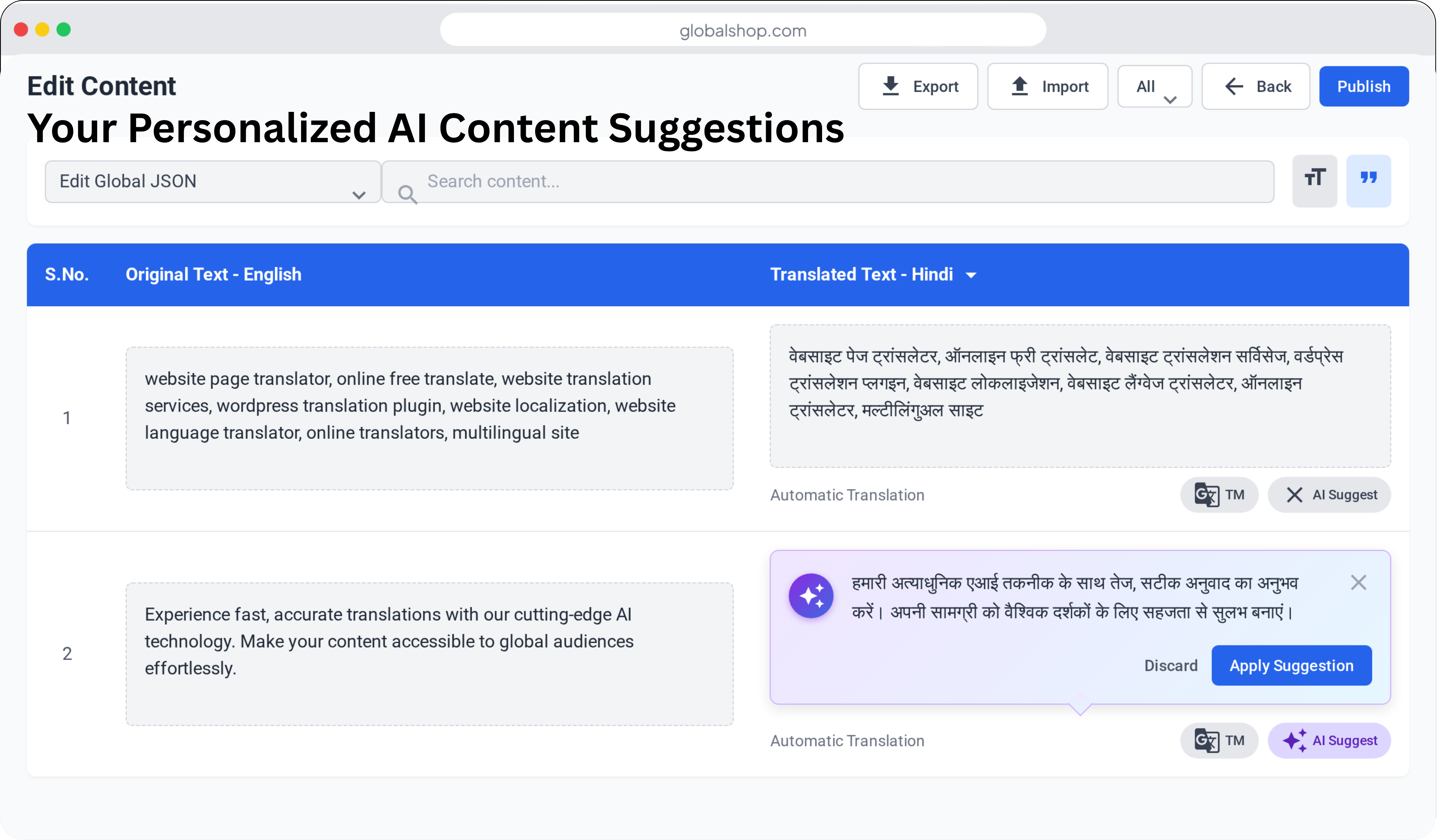
Alt tag: “MultiLipi 2.0 customizable language switcher with 15+ design styles and color settings”
Overview
Manual translation often misses nuance, tone, or cultural fit. That’s why MultiLipi 2.0 now comes with AI Content Suggestions — a feature that helps you rewrite or polish your translations using generative AI. With one click, you can enhance fluency, tone, and contextual accuracy directly inside your visual editor.
Whether you want to rewrite an awkward sentence or get a smoother variant, the AI Suggest button brings copywriter-level improvements instantly.
Use Case
Ideal for:
- Content teams aiming for better phrasing or tone
- Businesses seeking natural-sounding translations for marketing or UI copy
- SEO managers needing AI-polished metadata to match keyword intent
- Translators looking to quickly iterate and generate multiple versions for comparison
Why It’s Powerful
- Ensures brand-consistent messaging in every language
- Reduces dependency on expensive manual translators
- Trains the AI to learn your style over time
- Speeds up QA workflows by 10× for multilingual teams
🌍 Language Switcher: 15+ Designs with Full Customization
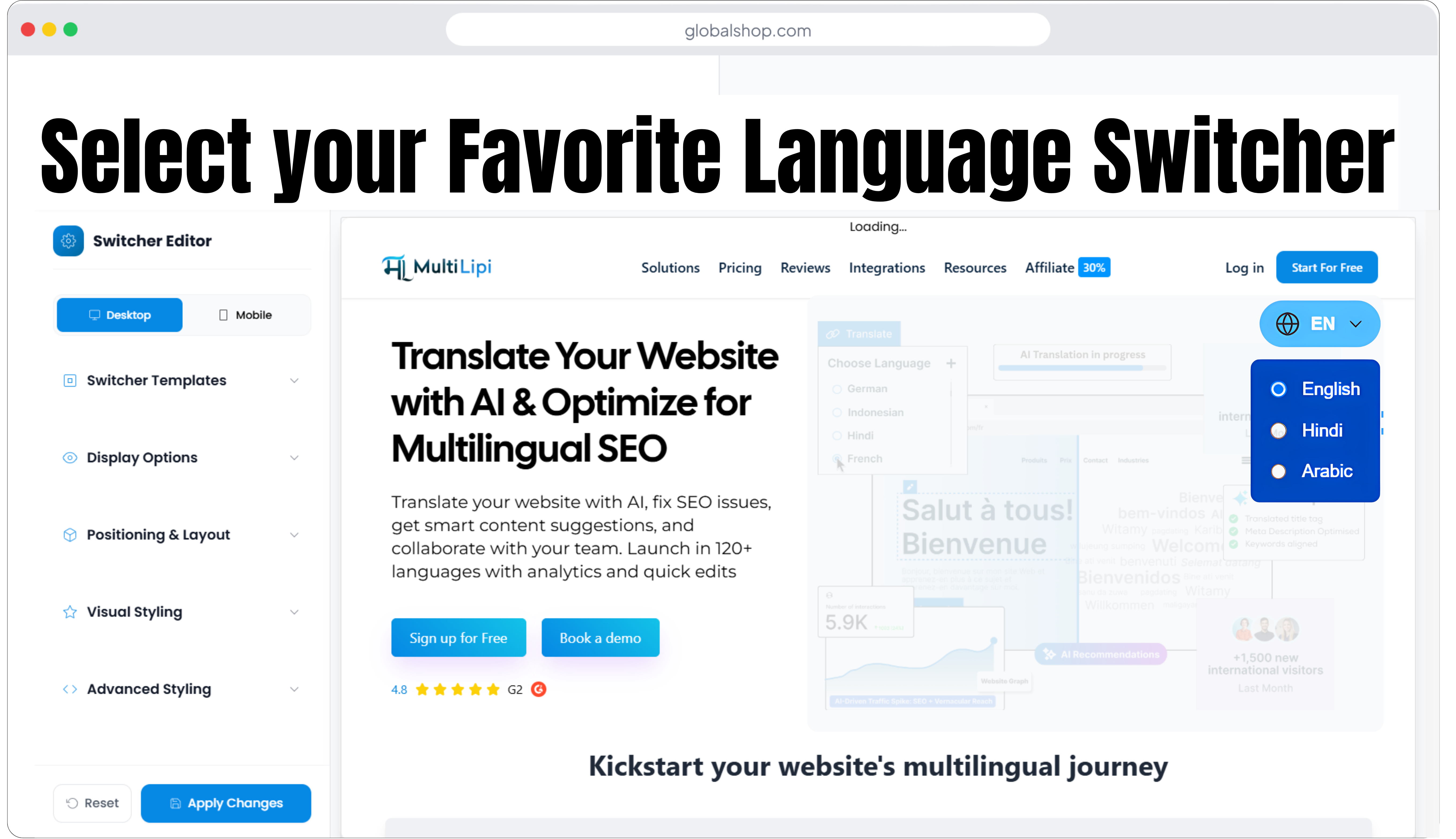
Overview
MultiLipi 2.0 brings a powerful upgrade to the way users interact with your multilingual website. With over 15 professionally designed language switcher styles, you now have complete freedom to choose how visitors switch between languages on your site.
Whether you prefer a compact dropdown, a floating button, or an inline list with flags — MultiLipi has it ready. Plus, with advanced customization features like color themes, positioning, world map icons, and custom CSS support, you can make the switcher truly blend with your brand’s design.
Use Case
Here’s how businesses across industries are using this feature:
- E-commerce websites position the language toggle near product pricing to help users quickly switch to their preferred language and complete purchases.
- Marketing agencies choose floating or embedded switchers that match brand colors and don't interrupt the site layout.
- Government portals and news sites use accessible switchers with large flags or tooltips to assist non-English speakers.
- SaaS platforms apply custom CSS to fully match the toggle with their UI framework and app theme.
It’s not just about switching languages — it’s about offering a frictionless multilingual experience that feels native to your site.
🖼️ Media Transalation & Alt Tags edit per Language
Overview
MultiLipi 2.0 introduces advanced support for fully localized visual content by enabling you to set custom image paths (src) and language-specific alt tags for every translated page. Now, you can dynamically swap out visual assets — such as banners, product photos, or culturally relevant illustrations — based on the visitor’s selected language without affecting your core page structure.
Beyond just replacing images, you can customize the alt attributes to align with translated content and local SEO needs. This ensures not only a consistent user experience across regions but also improves accessibility and boosts discoverability on image-based search platforms.
Use Case
This feature is essential for:
- 🛍️ E-commerce brands showcasing region-specific packaging, offers, or promotional banners.
- 🧑🏫 Educational platforms that display content graphics in the viewer’s native language.
- 📈 SEO marketers aiming to optimize image alt tags for regional keywords in every supported language.
- 🧑⚖️ Government & NGO websites that require culturally contextual imagery to build trust and inclusivity.
- 🧑🦯 Accessibility teams that want accurate, localized alt text for screen readers across all languages.
Example
An English product image might have an alt tag like:
"T-shirt with motivational quote in English"
Its French version could be:
"T-shirt avec citation motivante en français"
Combined with a localized banner image in /fr, this delivers a seamless visual and semantic match for your multilingual users.
With this feature, your website’s images become as multilingual and SEO-friendly as your text — making every interaction feel native and intentional.
✏️ Edit URL Slugs for Translated Pages
Overview
MultiLipi 2.0 introduces the ability to manually edit translated URL slugs for every page on your multilingual website. This gives you full control over localized SEO, allowing URLs to be more culturally relevant, keyword-optimized, and easier to understand for international users.
Great for:
- SEO experts aiming to insert native keywords in URLs.
- Brands seeking consistent slugs across languages for UX and marketing.
- Businesses operating in countries where URL readability improves trust.
Detailed Insights
- Helps you optimize slugs for search intent in other languages.
- Important for right-to-left (RTL) language support, especially for Arabic and Hebrew.
- Great synergy with Google’s hreflang tags and multilingual breadcrumbs.
🔍 Missing URL Scanner for Translated Pages
Overview
MultiLipi 2.0 now includes a real-time scanner that detects pages which failed to generate translated versions. Whether due to dynamic content or script-blocked routes, our scanner ensures you catch all gaps in your multilingual coverage.
Use Case
Ideal for:
- Detecting untranslated or skipped pages during setup.
- Verifying that all site links have been correctly crawled and processed.
- Keeping your multilingual site structure complete and SEO-optimized.
Detailed Insights
- Avoids SEO penalties from broken links or untranslated UX flows.
- Detects skipped pages due to noindex, robots.txt, or JS rendering.
- Seamlessly integrates with your translation memory to auto-suggest fixes.
📈 Word Consumption Tracker
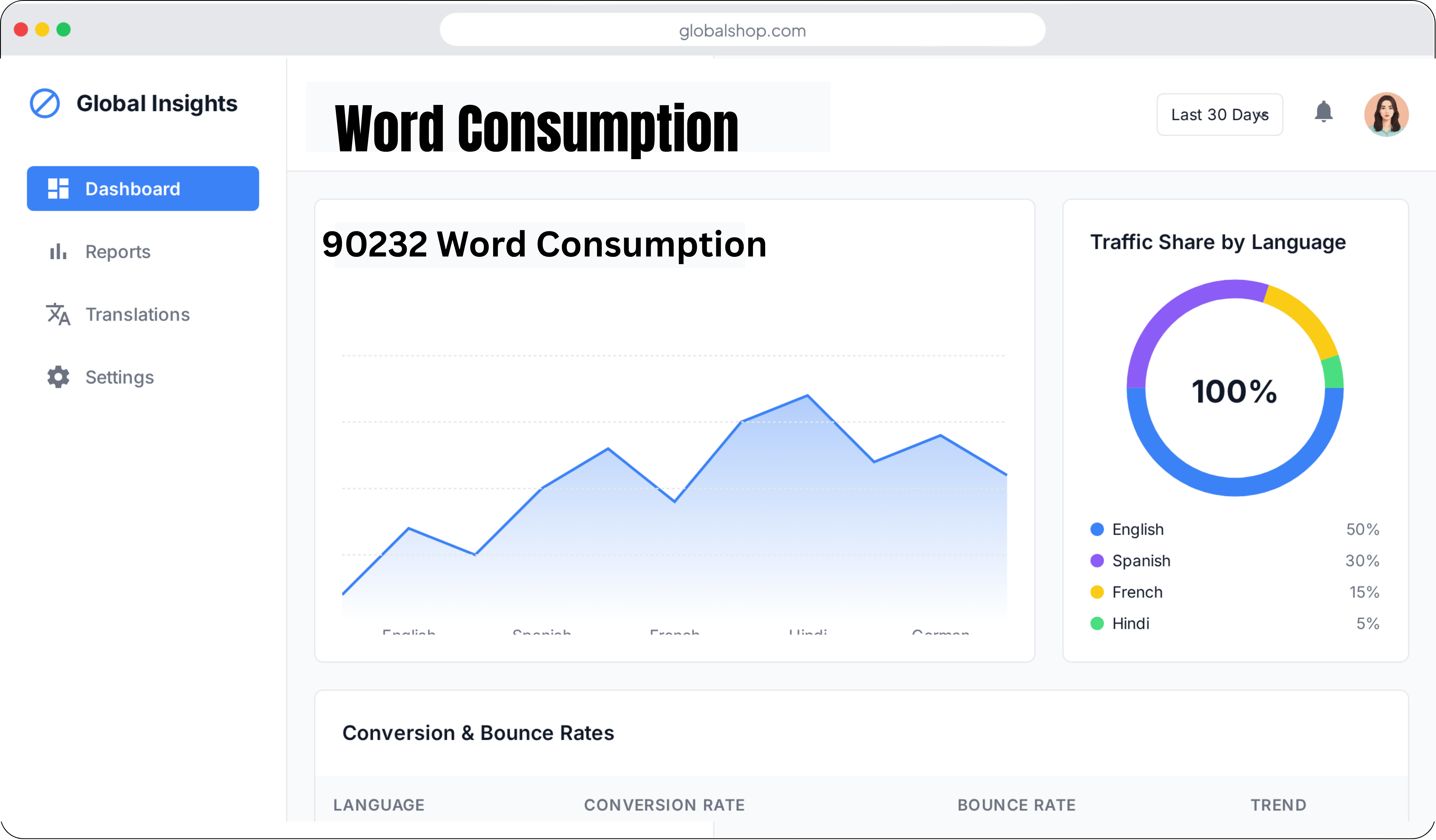
Overview
The updated Stats section in MultiLipi 2.0 now shows detailed word usage analytics. Track how many words you've translated, when, and whether they were AI-generated or manually edited — all in a single interactive graph.
Use Case
- Helps you monitor your translation word limits.
- Understand daily usage trends to optimize plan selection.
- Compare AI vs. manual word usage to gauge efficiency.
- Track progress over a custom date range.
Detailed Insights
- Compare AI vs Manual usage to optimize cost-efficiency.
- View weekly/monthly trends to scale up or pause translations.
- Great for performance reporting to clients or internal stakeholders.
📊 Multilingual Page View Analytics (Sub-URLs, Devices, Browsers)
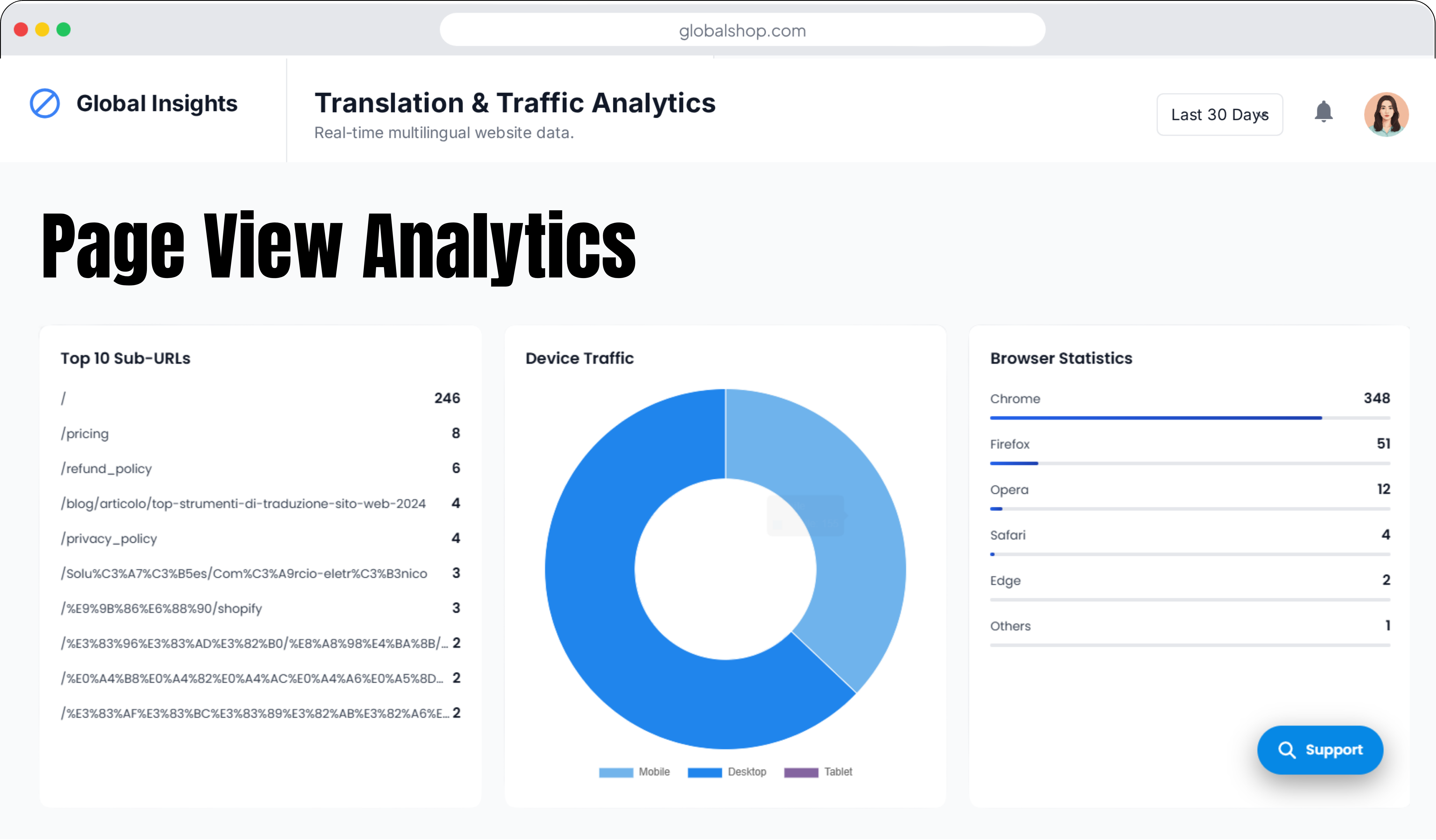
Overview
MultiLipi 2.0 introduces a powerful Page View Analytics suite designed to give you complete visibility into how your translated website performs across URLs, devices, and browsers. From tracking your most visited localized pages to understanding which devices and browsers your audience prefers — everything is now centralized in one clean dashboard.
Use Case
Ideal for:
-
Content marketers identifying top-performing translated blog posts or landing pages.
-
UX/UI teams tailoring multilingual layouts based on device usage.
-
Product managers analyzing multilingual traffic patterns to drive A/B testing.
-
SEO experts optimizing content for high-traffic languages and URL paths.
- Developers ensuring smooth rendering across browsers and screen sizes.
Detailed Insights
- Identify which localized URLs are drawing the most engagement to focus your SEO and marketing efforts.
- Discover mobile-heavy traffic in certain languages that may require responsive layout enhancements.
- Track browser-specific usage to fix rendering issues or UI bugs that might impact non-English users.
- Optimize user journeys by comparing behavior across language, device, and browser dimensions.
- Ideal for multilingual A/B testing, ad campaign targeting, and site performance benchmarking.
🧬 AI Language Model Detector
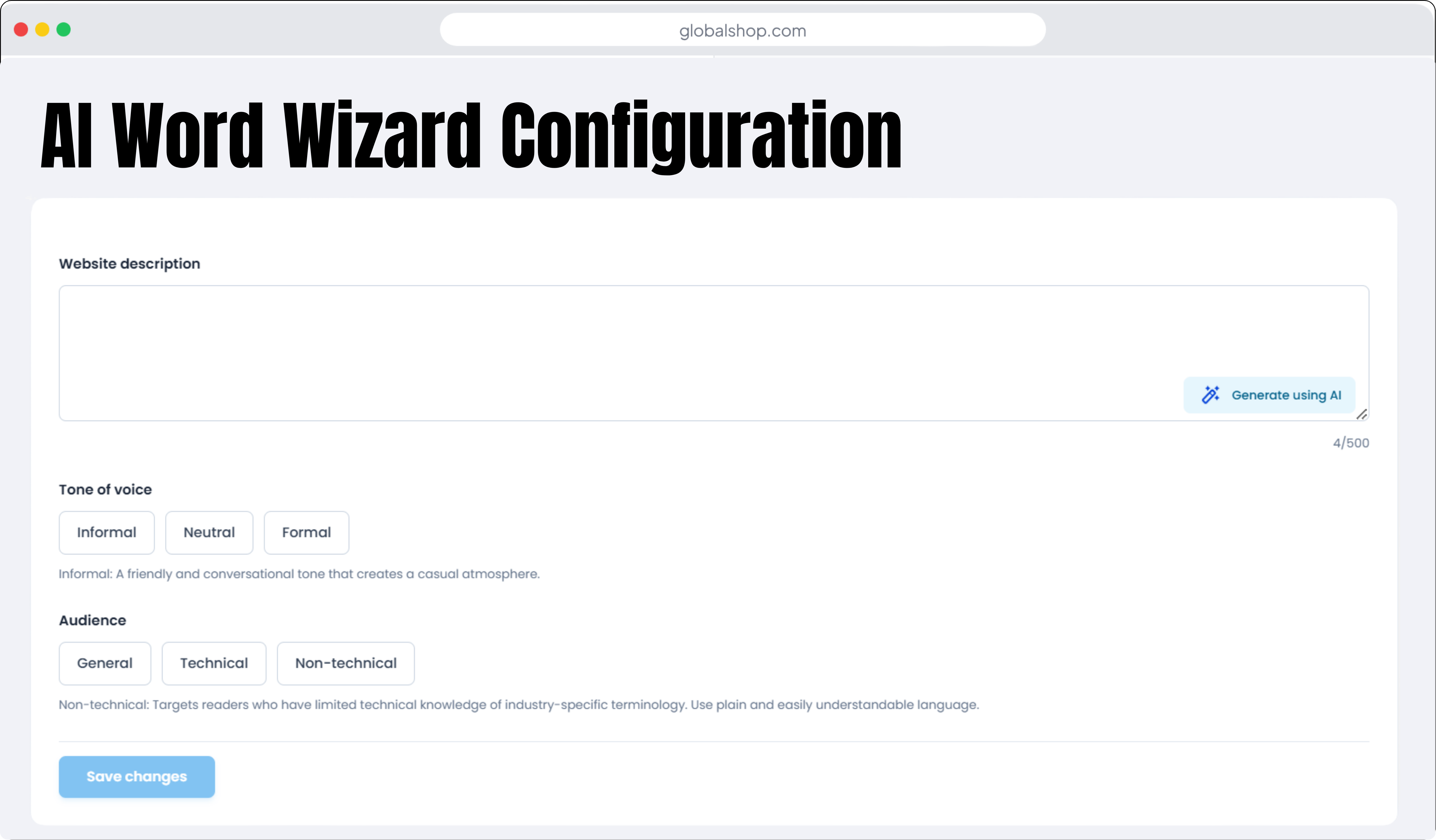
Overview
MultiLipi 2.0 introduces the AI Language Model Detector — an intelligent system that analyzes your website’s content and dynamically adjusts the tone of voice, translation style, and audience targeting for each translated page. Instead of applying the same translation logic across all industries or use cases, this AI adapts to your site’s unique voice — whether you're running an eCommerce site, SaaS product, blog, or government portal.
It reads your website like a linguist and rewrites it like a local expert.
Use Case
Perfect for:
-
Global brands wanting to maintain consistent tone across all languages
- Startups and SaaS that need formal translations for technical users
- eCommerce companies that require informal, localized product pitches
- NGOs and educational portals that need easy-to-understand content for non-technical audiences
This tool can:
- Automatically generate a website description summary
- Adapt translations for formal, neutral, or informal tone
- Customize content for general, technical, or non-technical readers
- Guide your entire website translation style to match your brand voice in every language


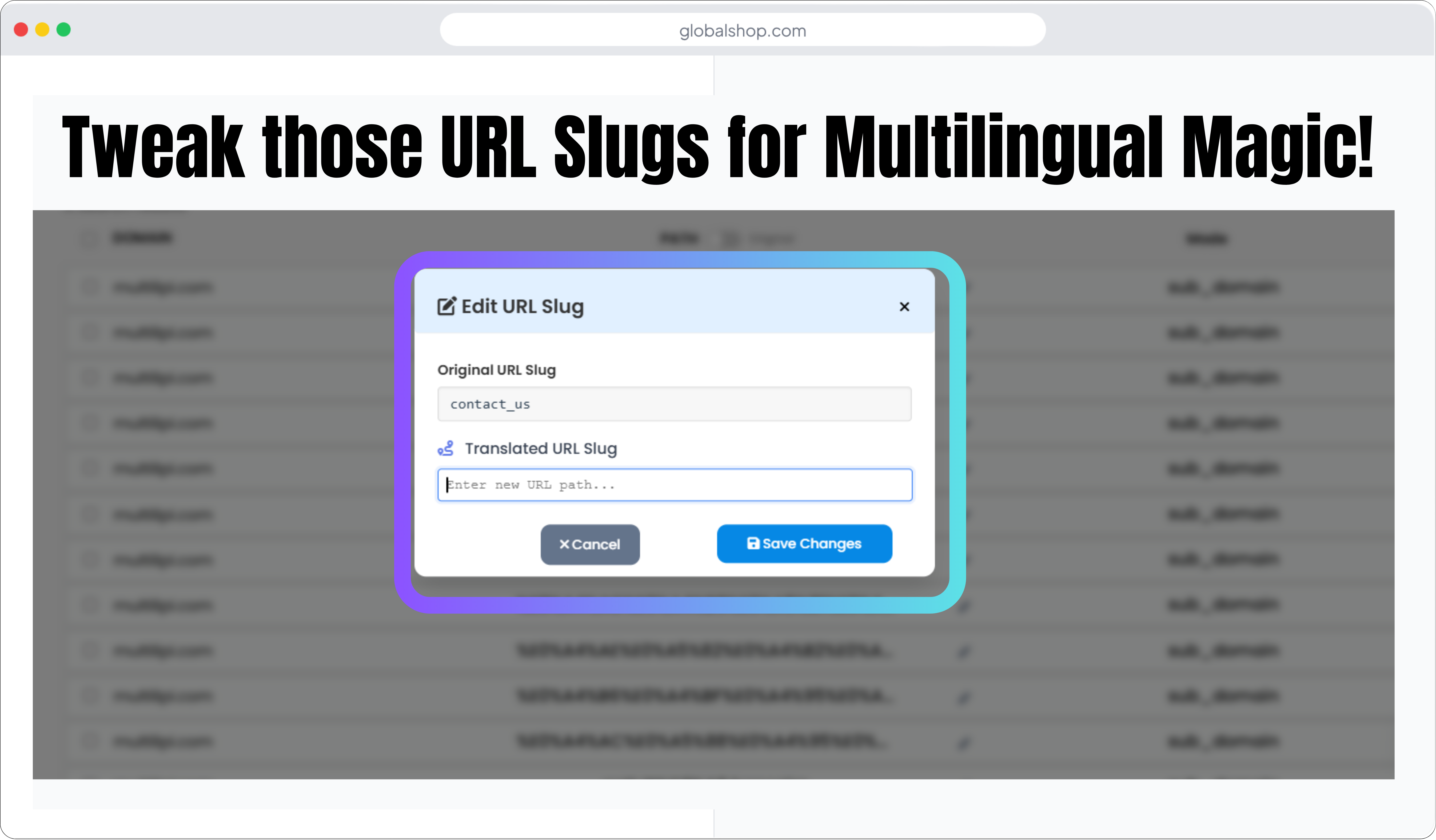
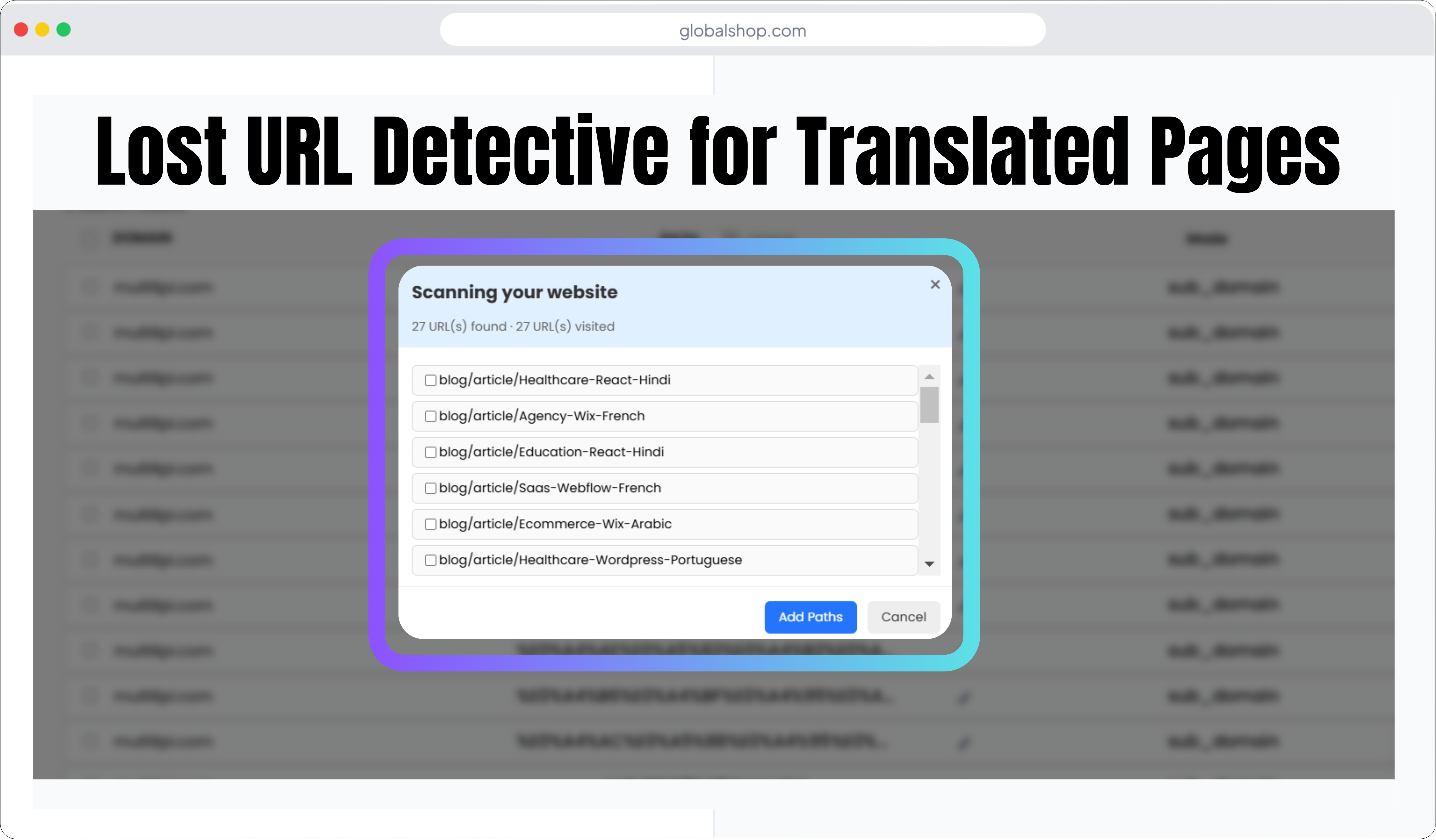
Comments